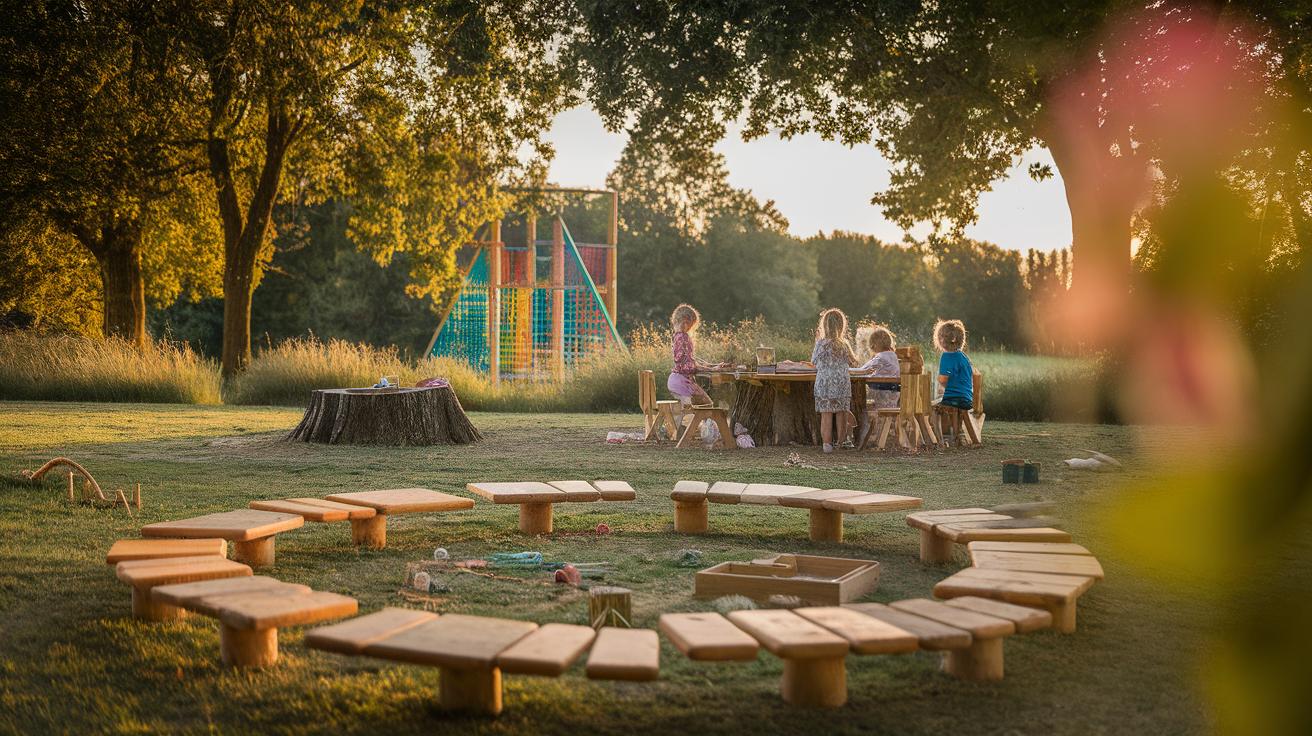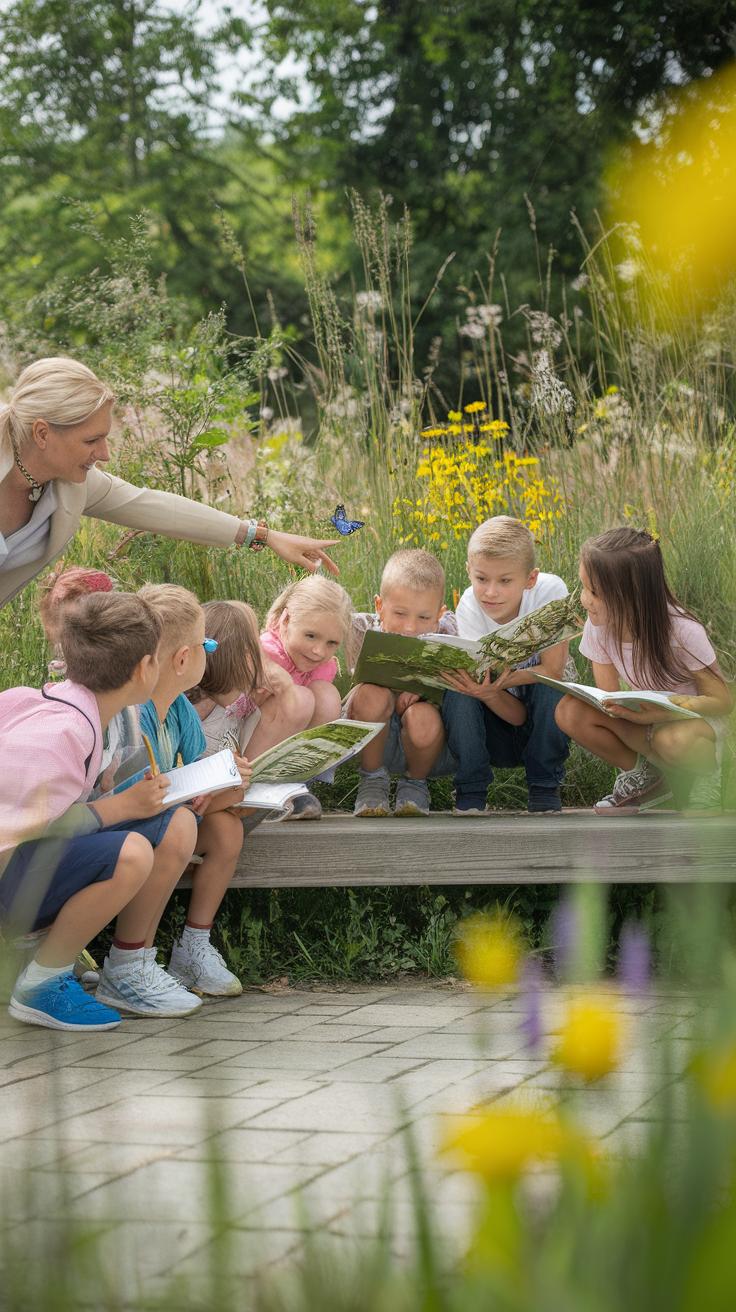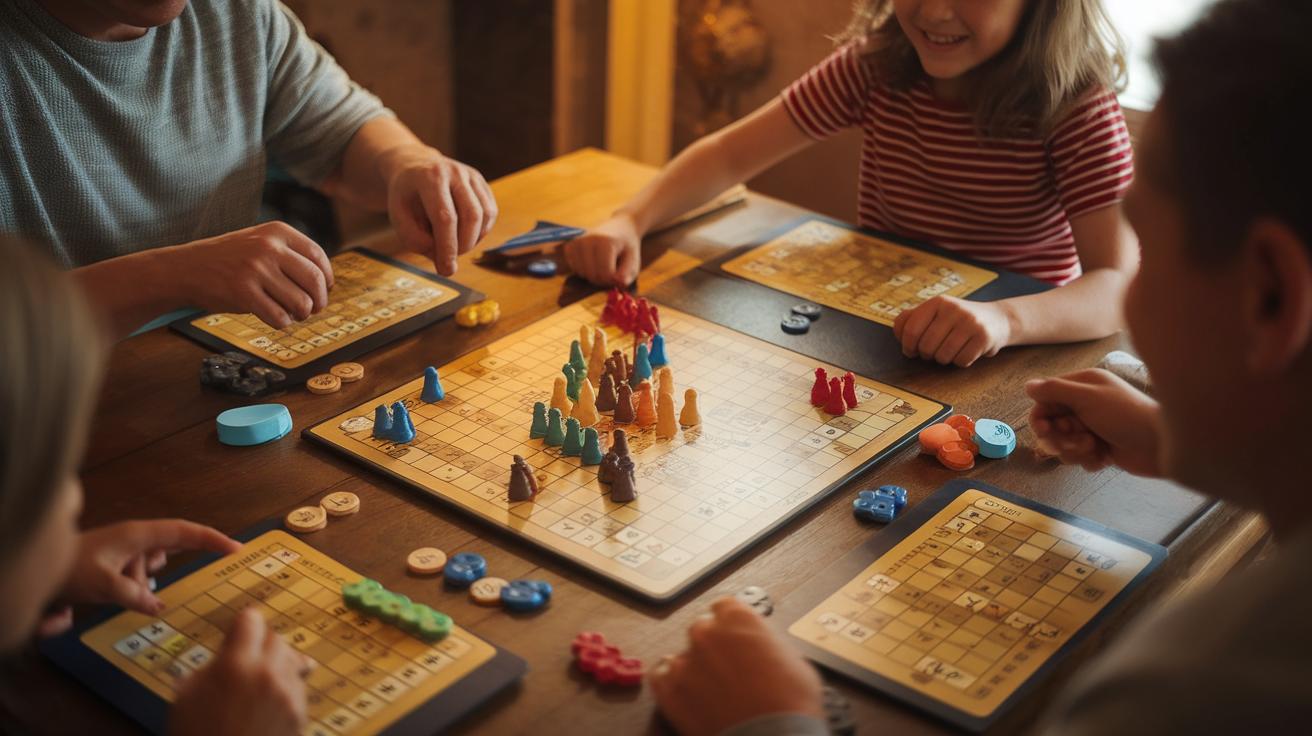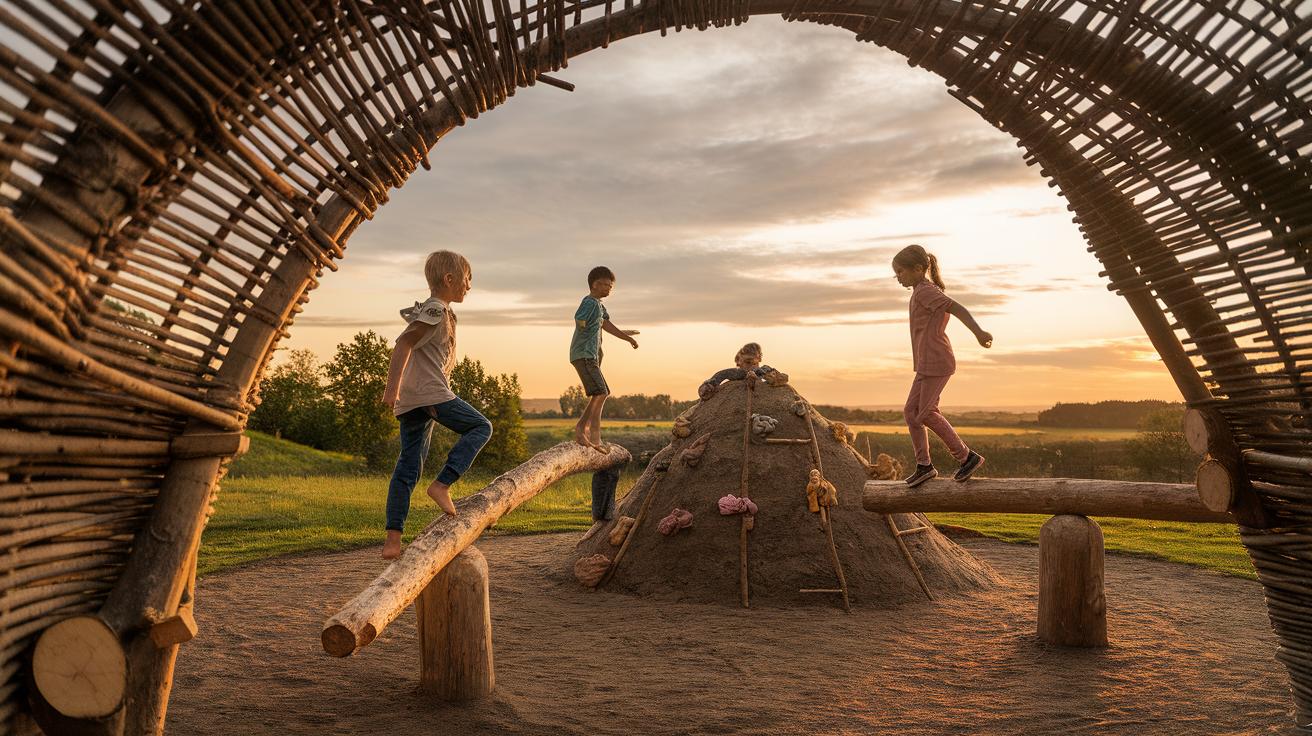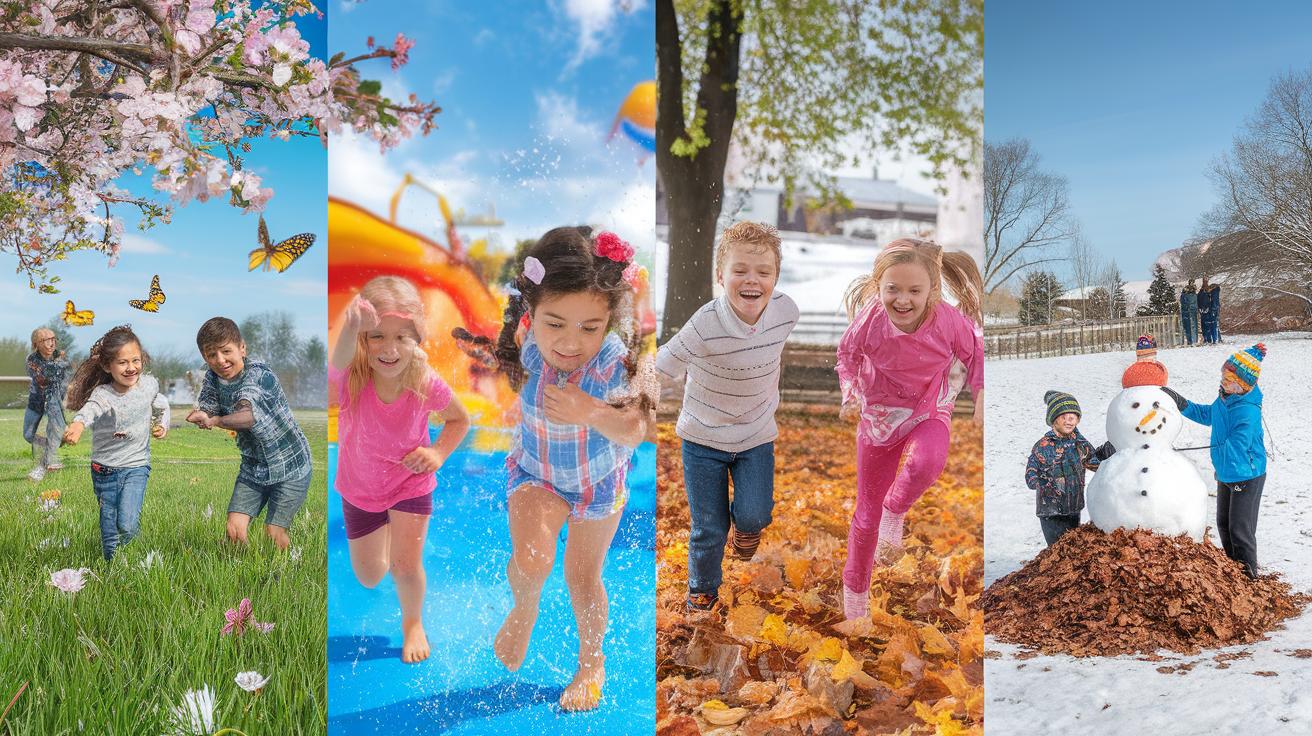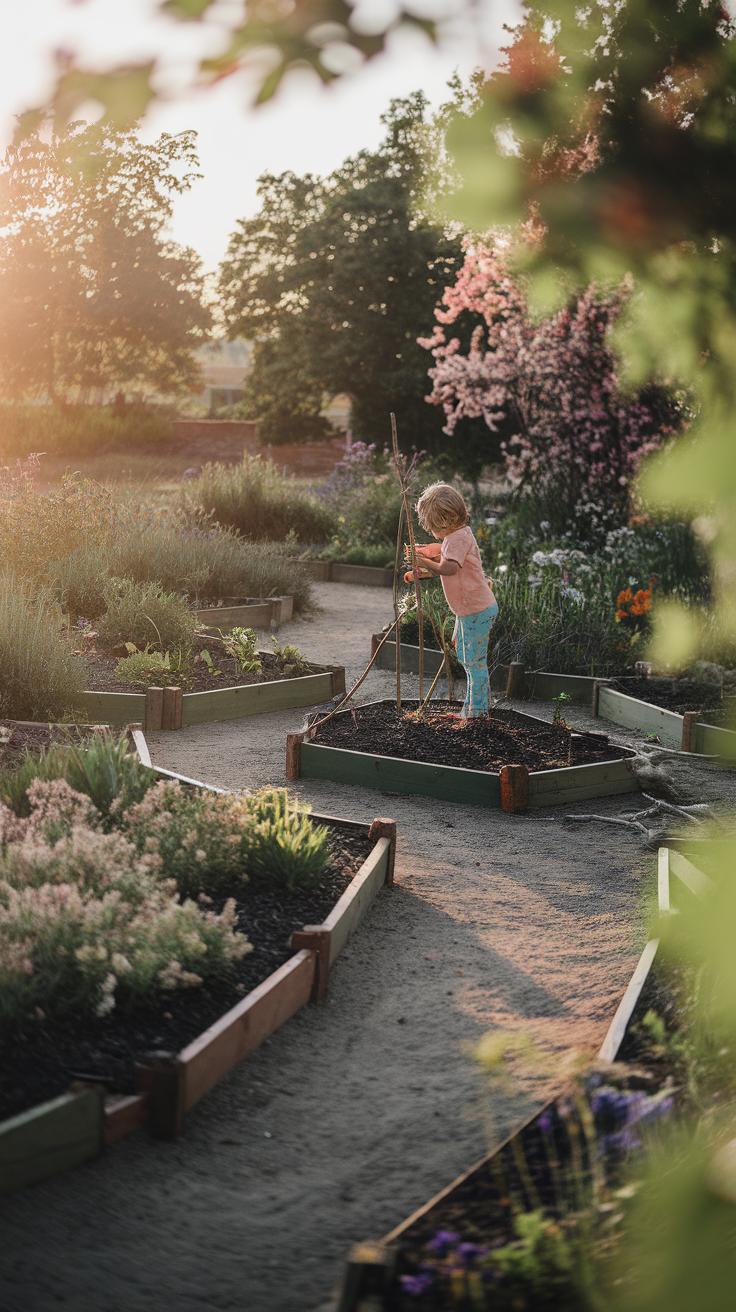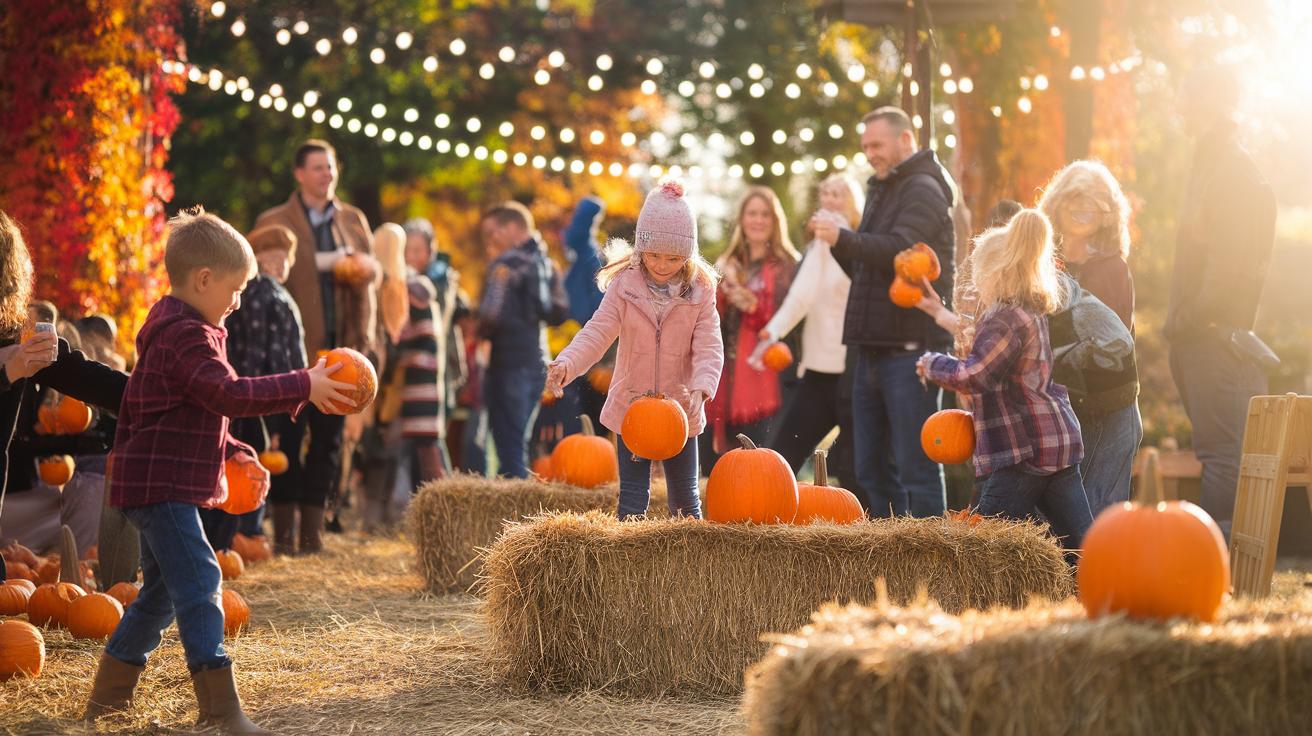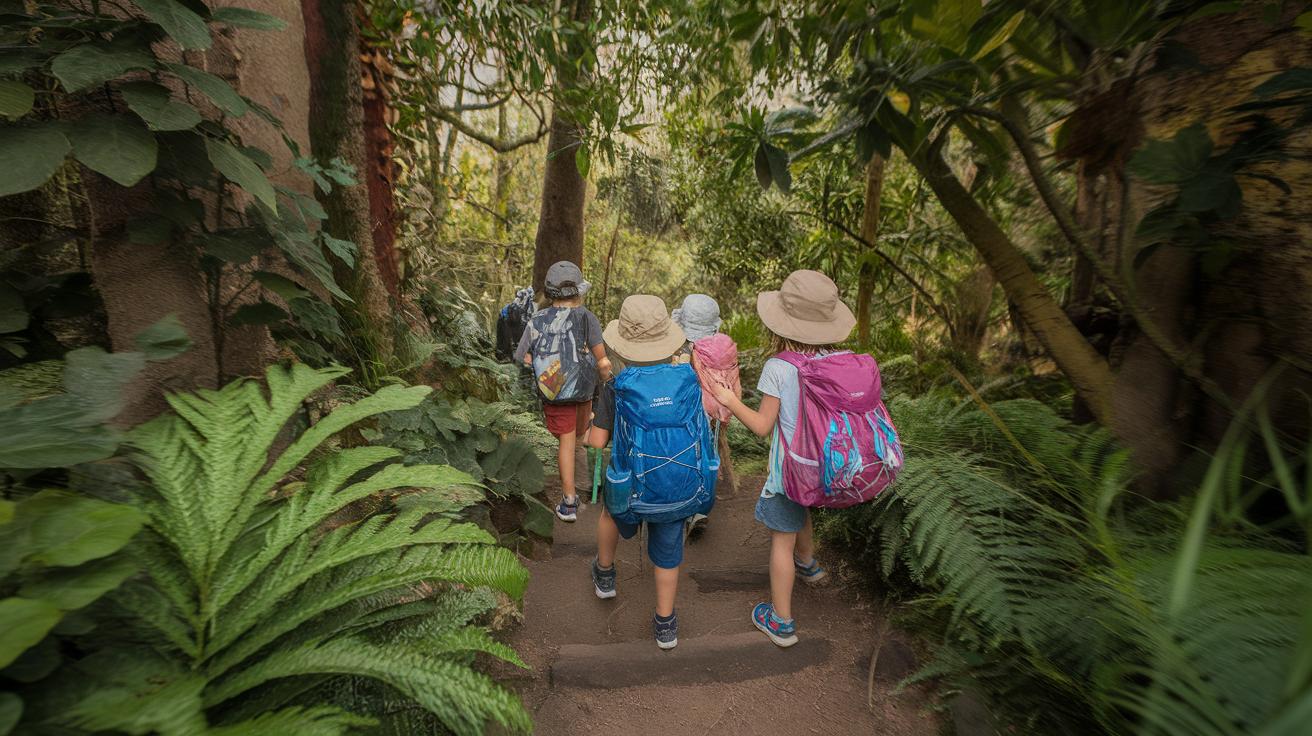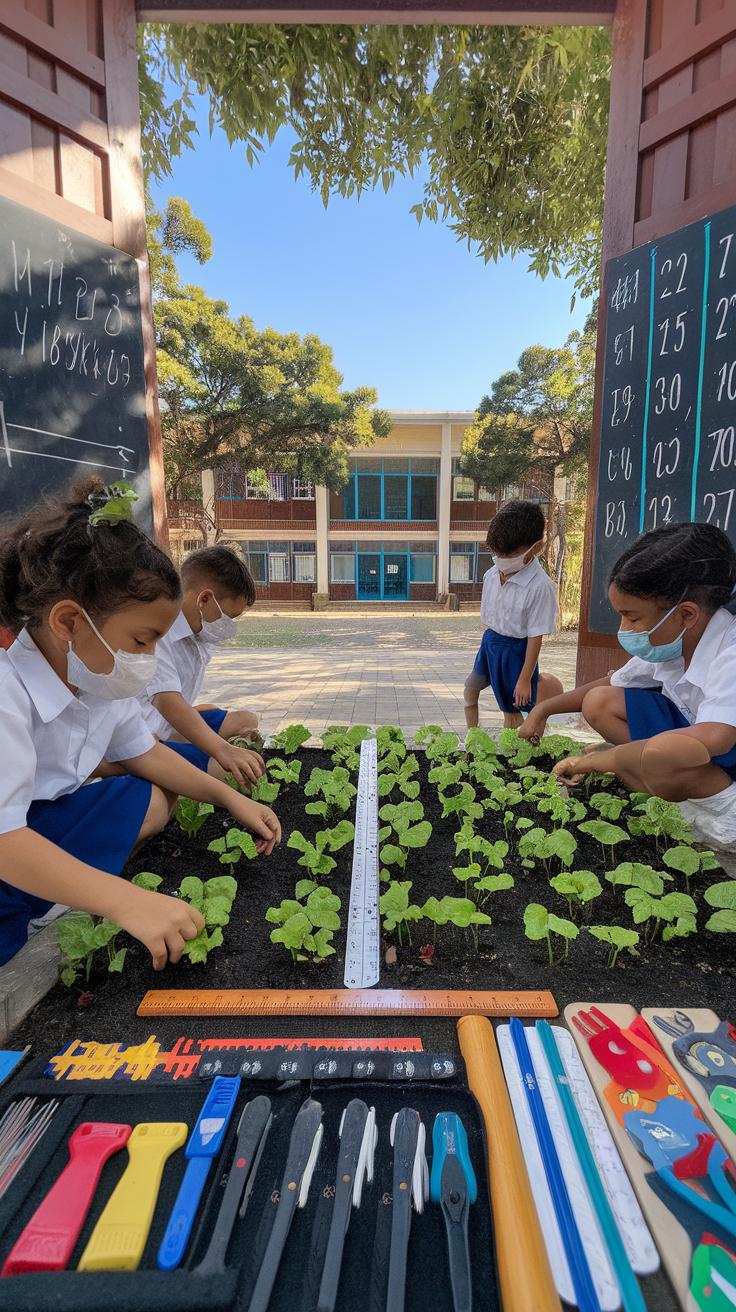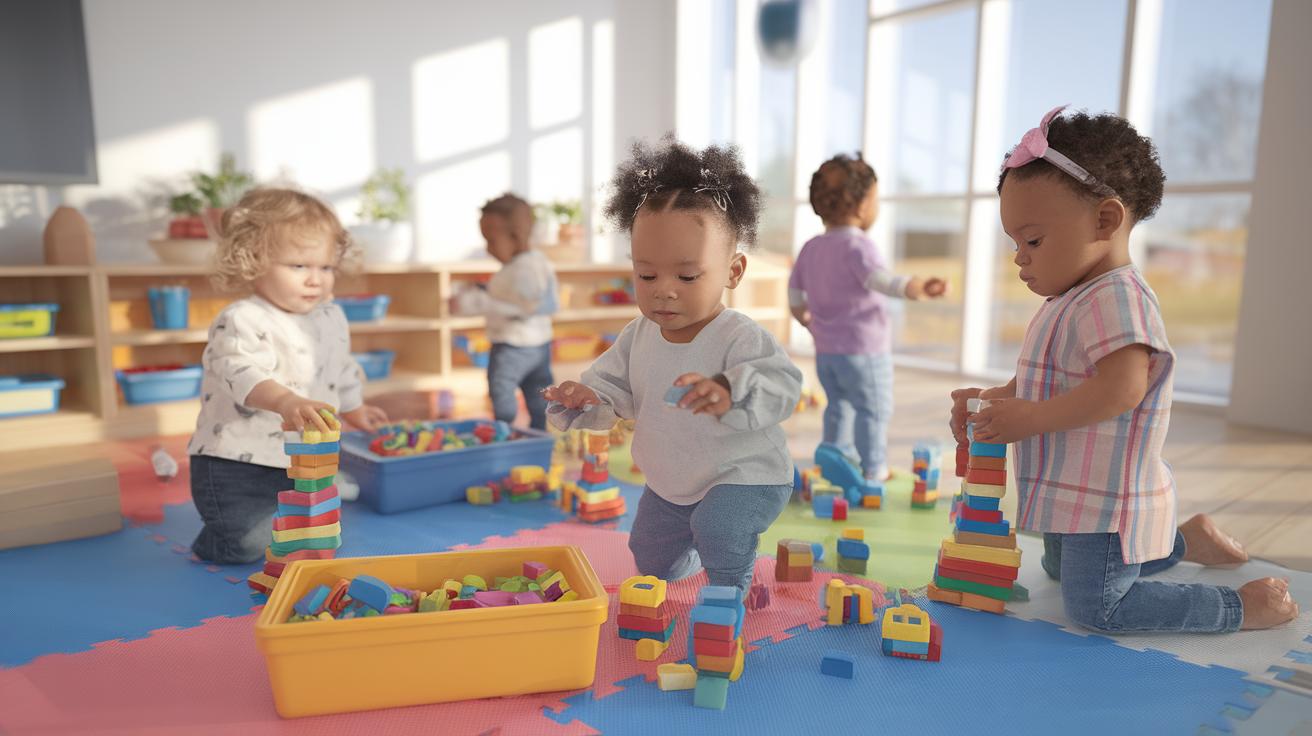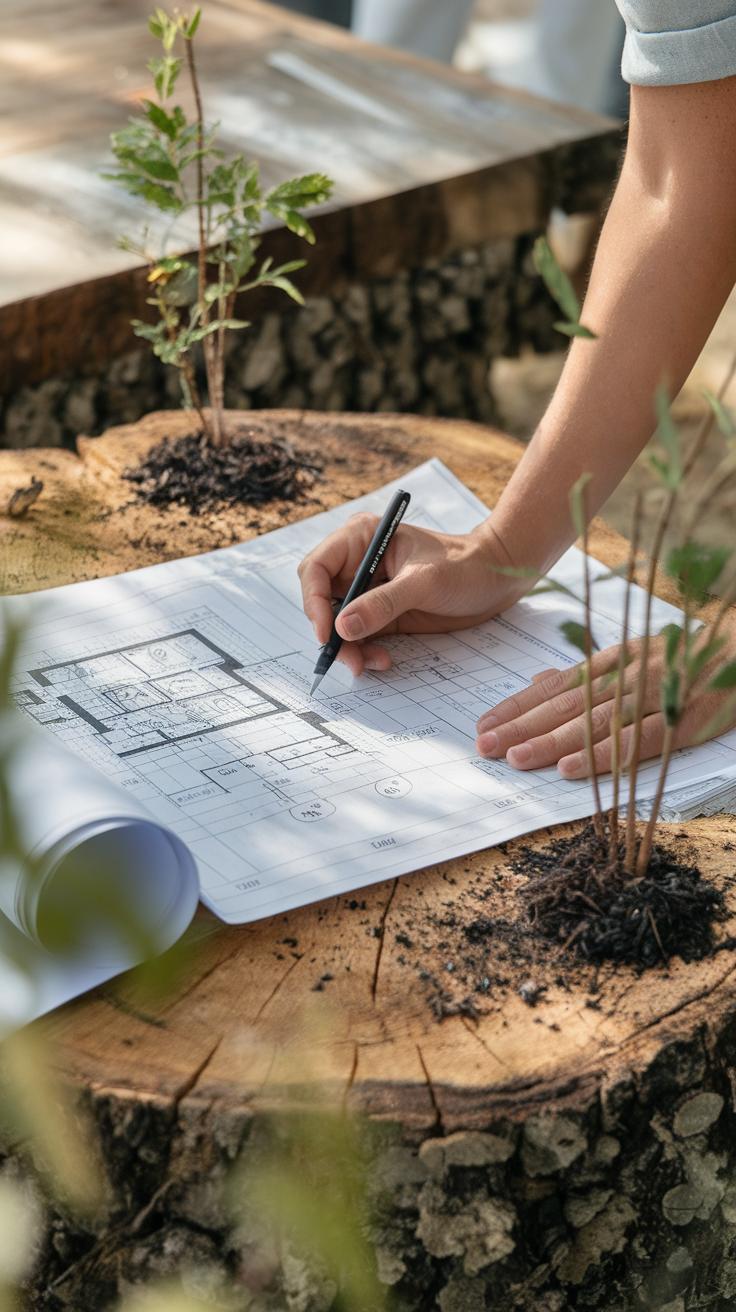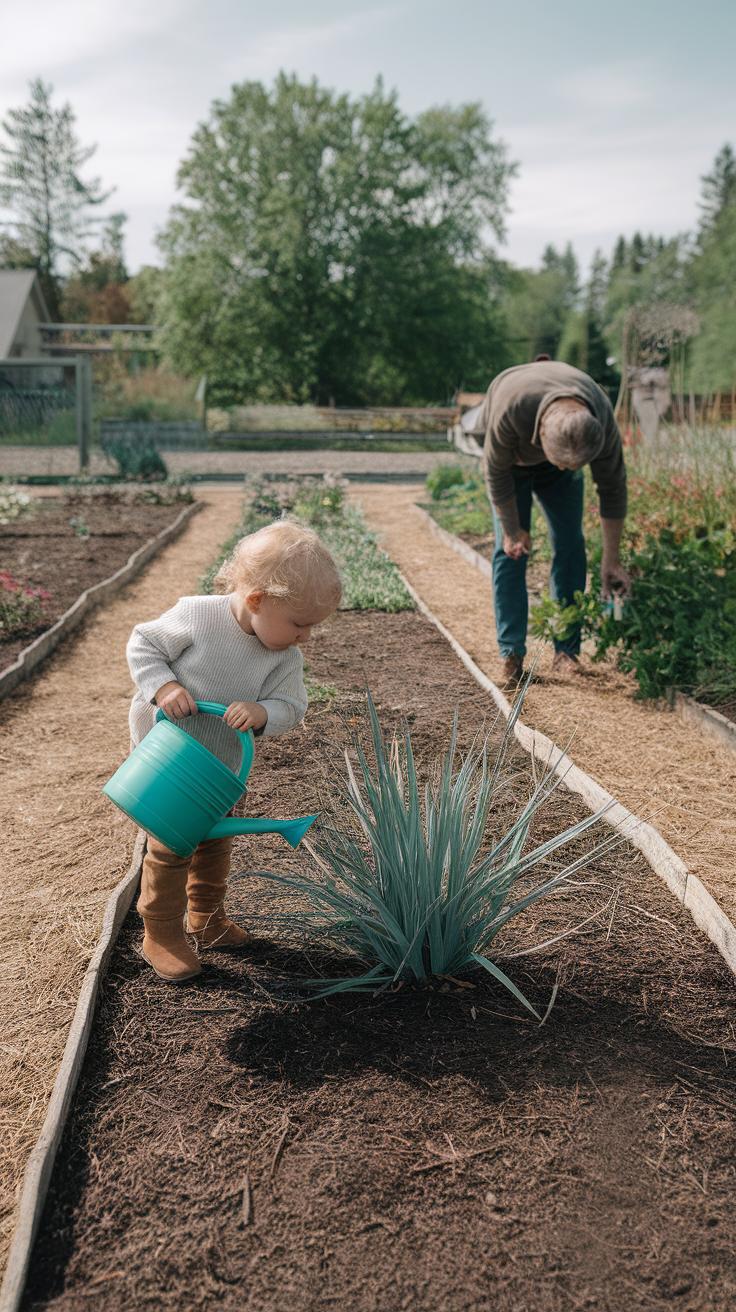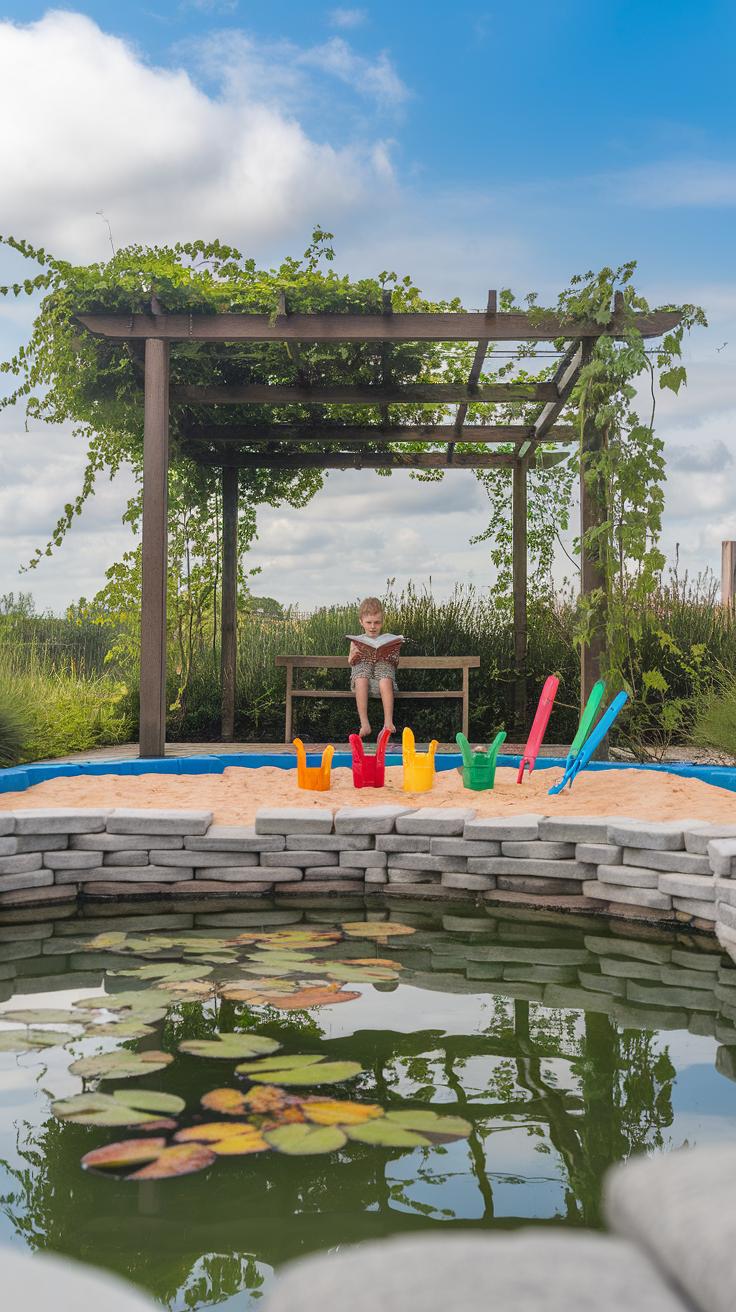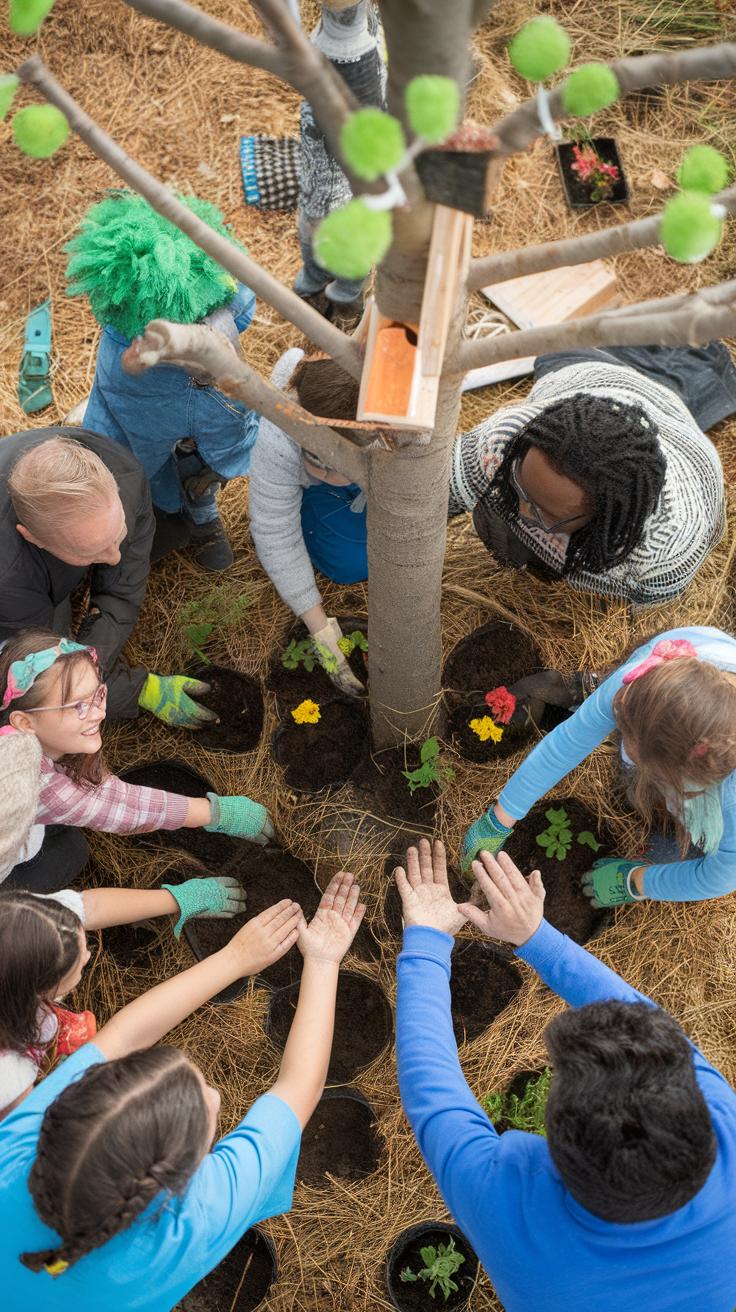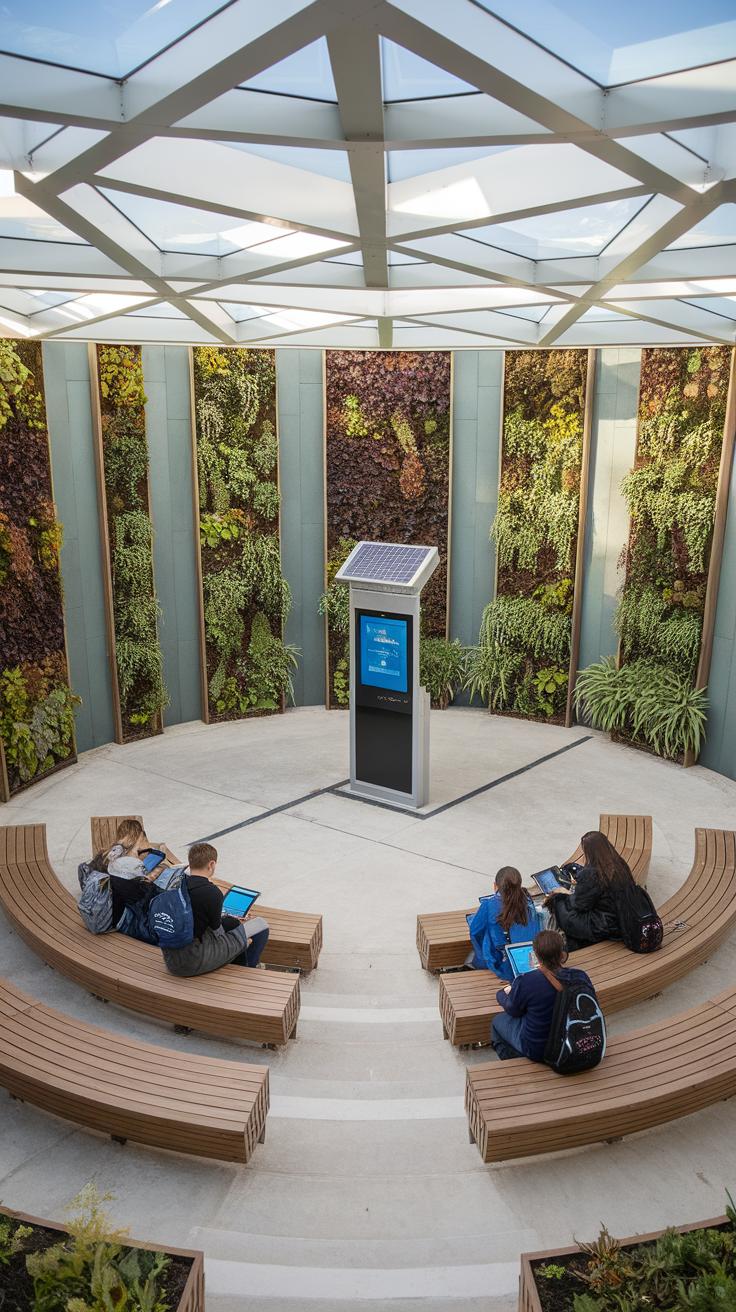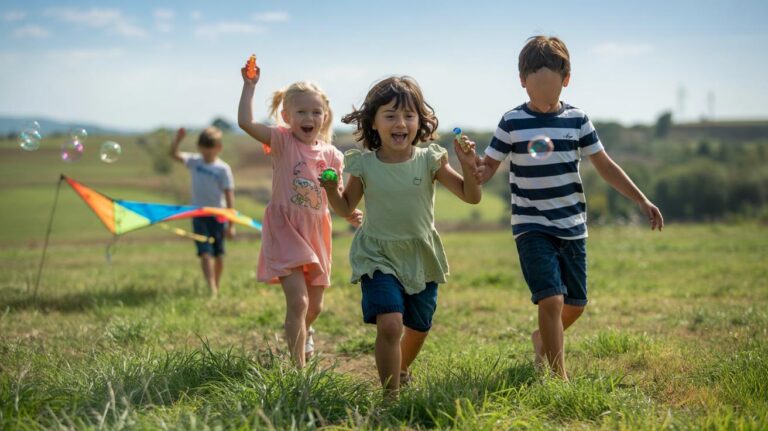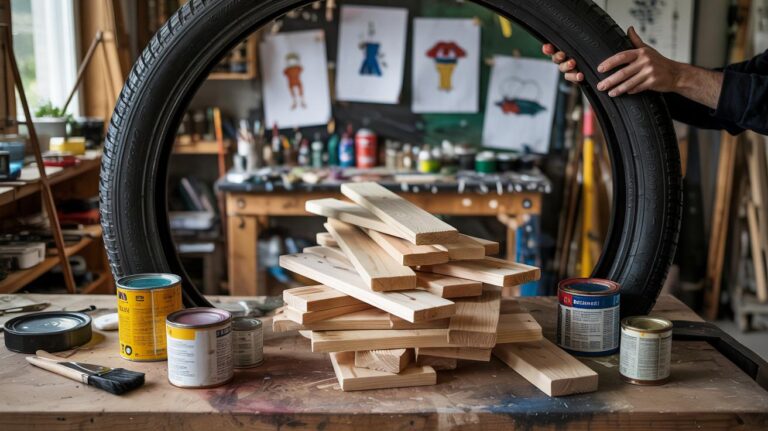Introduction
Outdoor learning spaces provide unique opportunities to shape the way children engage with the world around them. These spaces go beyond traditional classrooms by offering hands-on experiences that stimulate curiosity and encourage active learning. Using natural settings as classrooms, educators can help students gain a deeper understanding of subjects through interaction with nature and the environment. This approach supports a variety of teaching methods and learning styles, helping young minds grow in a more holistic way.
Designing effective outdoor learning environments requires careful planning. The choice of location, materials, and layout impacts how students interact with the space. Well-designed outdoor spaces encourage exploration, creativity, and physical activity, which are crucial to development. By considering practical aspects such as safety, accessibility, and the needs of different learners, you can create inspiring spaces that nurture children’s mental and physical growth.
Understanding the Role of Outdoor Learning Spaces
Outdoor learning spaces offer more than just a change of scenery from traditional classrooms. They provide environments where children learn by doing, moving, and interacting with nature. These spaces encourage hands-on activities that help students understand lessons actively rather than passively listening to lectures.
Unlike indoor classrooms, outdoor spaces allow for flexible setups, fresh air, and natural light, all of which support better focus and energy levels. When you take learning outside, children engage all their senses, making lessons more memorable.
These spaces promote holistic development by mixing physical activity with cognitive tasks. Beyond facts and figures, children develop social skills, creativity, and emotional intelligence. This combination is hard to achieve within four walls.
How might your students respond if they could touch, see, hear, and explore what they are studying in real time? Designing schools that include outdoor learning areas helps educators answer that question with a definite yes.
Benefits of Outdoor Learning
Children gain many advantages from learning outside. Physical movement naturally increases when lessons happen outdoors, which supports healthy growth and improves concentration. Engaging with nature also sparks curiosity and reduces stress.
Outdoor lessons encourage children to ask questions and solve problems on their own. This boosts critical thinking and creativity. When students can connect what they learn to real-life environments, their understanding deepens.
Moving around and interacting with nature affects emotional growth too. Children often feel more confident and less anxious. Nature’s variety helps students develop patience and empathy as they observe changes in weather, plants, and animals.
Have you noticed how children light up when they explore outside? Those moments turn into powerful learning experiences that support their minds and hearts.
Challenges and Considerations
Teaching outdoors comes with obstacles that require planning. Safety tops the list. You must ensure the space is secure from hazards like sharp objects, uneven ground, or traffic. Regular checks can prevent accidents.
Weather changes can interrupt lessons. Preparing for sun, rain, or wind means having appropriate clothing, shelter, or backup plans. These precautions keep learning consistent.
Accessibility is another crucial factor. Outdoor areas should accommodate all students, including those with mobility challenges. Paths, seating, and activities need to be inclusive to support every learner.
How can you design outdoor lessons that remain effective despite unpredictable weather or varied student needs? Thinking ahead about these challenges helps you create spaces that work for everyone.
Key Elements of Effective Outdoor Learning Spaces
Creating a successful outdoor learning space starts with blending natural features that captivate attention and invite exploration. Trees, plants, and water elements provide real-world examples of science and environmental studies. They spark questions about growth, weather, and ecosystems. When you bring these living components into learning areas, you encourage curiosity beyond books.
Arranging flexible seating supports the flow of activities. Groups can gather around circular benches for discussions, while small nooks allow children to reflect quietly. Zones dedicated to hands-on projects, like gardening or art, give students space to experiment with materials and ideas. Think about how your space can adapt to different teaching methods and student needs.
Incorporating sensory elements, such as textured surfaces or fragrant plants, helps engage multiple senses. This supports learners with varying preferences and abilities. Including diverse learning materials from natural objects to simple tools encourages discovery and creativity. How will your outdoor area meet the variety of ways children learn and interact?
Choosing Natural Features
Integrating trees or shrubs not only offers shade but also creates habitats for birds and insects, turning lessons into live demonstrations. The sound of running water or a small pond can calm and focus children while teaching about ecosystems. Plants that change with seasons provide ongoing learning opportunities about growth cycles and weather effects.
Design your outdoor space with diversity in mind. Select native species that are low-maintenance but rich in educational value. This lets children observe local wildlife and understand their environment. When plants and water elements invite touching, smelling, and watching, you fuel natural curiosity and hands-on learning.
Consider your space’s climate and safety when choosing features. Will trees block harsh sunlight? Is the water feature secure and accessible? Thoughtful choices can make your outdoor classroom a dynamic extension of the curriculum.
Flexible Seating and Learning Zones
Offer a range of seating to suit different group sizes and activities. Movable chairs and benches encourage collaboration and quick rearrangements. Seating on logs or cushions on grass support informal learning and comfort. Providing quiet corners gives children spaces for reflection or reading.
Divide the outdoor area into zones that align with specific activities: a discussion circle, a hands-on project corner, and a sensory exploration spot. These zones help manage transitions between tasks and maintain focus. What zones will support your lessons and student engagement most effectively?
Keep accessibility in mind by ensuring pathways and seating accommodate all children. When seating and zones adapt to various needs, you create an inclusive space where every learner feels welcome and supported. Flexible outdoor design turns the environment itself into a teaching tool.
Design Principles to Inspire Young Minds
Designing outdoor learning spaces starts with encouraging children to be curious. Create areas where kids can touch, move, and change things. Use simple structures like logs, crates, or loose parts that children can rearrange. This invites them to test ideas and learn by doing.
Keep the space easy to reach and navigate. Paths should be wide, smooth, and clear, so children of all abilities can move freely. Avoid clutter, and use natural materials that blend with the environment but remain safe.
Safety matters, but don’t make the space feel closed off or restrictive. Consider low fencing or natural borders like bushes to keep children safe while allowing visual contact with adults.
Design areas that can transform as children grow. Include elements that can change use, like adjustable seating or open spaces for different activities. This flexibility supports different learning styles and ages.
How will your outdoor space invite kids to play an active role in their own learning? Aim for simplicity, safety, and options that spark creativity and movement every day.
Encouraging Exploration and Discovery
Design spaces that invite hands-on learning. Add features children can move or rearrange—like stepping stones, balance beams, or stackable blocks. These elements help kids try new things and make choices.
Include natural objects such as rocks, leaves, or water trays so children can experiment. For example, a sand table with different tools encourages digging and building. What might children discover when they shape the world around them?
Provide zones for different activities: some for quiet watching, others for active play. This variety lets kids decide how they want to learn. Use open-ended materials that don’t limit creativity or outcomes.
Invite children to use their senses by planting fragrant flowers or installing sound elements like wind chimes. These add layers of discovery beyond just sight or touch.
Ensuring Safety and Accessibility
Focus on creating a safe, welcoming environment that meets every child’s needs. Use soft surfaces like mulch or rubber to reduce injury risks. Remove hazards such as sharp edges or unstable structures.
Design pathways wide enough for wheelchairs and include ramps where needed. Place seating at different heights to support children who may need to rest frequently.
Keep sightlines open so adults can watch children easily without feeling intrusive. Natural shade areas protect kids from sun exposure while encouraging outdoor time year-round.
Choose colors and textures thoughtfully. High-contrast markings can help children with visual impairments. Think about how your design respects physical abilities without drawing attention to differences.
What changes can you make to ensure every child can join in safely and comfortably? Accessibility enriches learning for all young minds.
Integrating Outdoor Learning with Curriculum Goals
Your outdoor learning space can support many subjects by linking design to curriculum goals. Think about creating areas where children observe plants and insects for science lessons. For art, provide natural materials like leaves, sticks, and stones for creative projects. Open spaces invite physical education activities such as obstacle courses or team games that develop motor skills and cooperation.
Social studies can benefit from spaces that encourage group discussions about the environment, culture, or history. Seating circles or gathering spots outdoors work well for these talks. For example, conducting a local history walk or role-playing community roles turns the outdoor space into a dynamic classroom connected to your lessons.
How can you shape your outdoor space to make learning practical and fun across subjects? Balancing active and quiet zones helps meet different educational needs while encouraging children to interact naturally with their environment.
Subject-Specific Design Considerations
Design certain sections of your outdoor space with clear learning goals for specific subjects. A garden is ideal to teach biology or environmental science. Students can plant seeds, observe growth, and study pollinators firsthand. Raised beds or labeled plant stations make botanical lessons easier and more interactive.
For physical education, open grassy areas or flat surfaces allow running, jumping, and games. Including flexible equipment like hoops or ropes invites varied exercises. If space allows, natural features such as logs or climbing structures challenge balance and coordination.
Art projects require quiet, shaded spots with tables or flat surfaces. Providing natural supplies encourages creativity while connecting art to the outdoor world. Can you design spaces where lessons fit naturally “in place” to deepen understanding?
Facilitating Project-Based Learning
Outdoor areas can become hubs for hands-on, project-based learning where teamwork and problem-solving take center stage. Set aside zones with materials for building, experimenting, or crafting. For example, a small construction area with safe tools can support engineering projects aligned with science or math goals.
Spaces that encourage group work help students practice communication and responsibility. Imagine kids designing a butterfly garden together or monitoring weather patterns as part of a class science project. These tasks bring real-world problems outside the classroom walls.
What outdoor features make teamwork and hands-on learning easy and natural? Flexible layouts and accessible tools strengthen your space’s role in active, meaningful learning experiences.
Practical Tips for Planning and Development
Site Selection and Analysis
Begin by observing how sunlight moves across the space throughout the day. Children need areas with both sun and shade for comfort in different weather. Check the soil drainage after rain. Avoid spots where water pools or stays soggy, since these can limit use and damage plants or materials. Make sure the site is easy to reach for all students, including those with mobility challenges. Consider how close the area is to classrooms and restroom facilities to support frequent use. Look for existing features like trees, slopes, or fences that could either help or hinder your plans. Can this site inspire learning daily without extra barriers? Spending time assessing these details will save trouble later and guide your layout choices.
Involving Stakeholders
Ask teachers what activities they want the space to support. Parents can suggest ideas based on what children enjoy and the community’s values. Invite local experts, such as gardeners or environmental educators, to share advice on plants or outdoor safety. Hold meetings where students can express their wishes—what would make the space fun and useful for them? Use surveys or simple drawings to gather input from everyone. When stakeholders contribute, they feel ownership of the project and are more likely to support it. How might you encourage ongoing feedback once the space is in use? Building these connections early sets the foundation for a successful outdoor learning environment.
Maintaining and Evolving Outdoor Learning Spaces
Keeping an outdoor learning space in good shape requires regular care. Look for worn surfaces, loose materials, and debris that could cause trips or injuries. Clearing pathways and cleaning surfaces often prevents small problems from growing.
Seasonal changes bring new challenges. In the fall, rake leaves and check for slippery spots caused by rain. Winter may require snow removal and inspecting structures for ice damage. Spring and summer call for trimming plants and refreshing soil in garden areas.
Safety checks should happen weekly. Test playground equipment for stability. Monitor insect nests or wildlife that may pose risks. Ask students and staff for feedback on what parts feel safe or need attention. Keeping students included helps spot issues faster.
Updating the space keeps it fresh. Changing displays to reflect current lessons or seasonal themes engages students. Add flexible equipment to support new activities or learning styles. Consider how the space supports your changing goals and what you can improve.
Routine Maintenance Strategies
Develop a simple checklist to keep your outdoor space ready for learning. Daily tasks might include picking up trash and sweeping hard surfaces. Weekly steps should cover checking plant health and removing hazards like broken branches.
Regular watering keeps plants alive and inviting. Repair tools and structures promptly to avoid extended downtime. Using natural pest control methods helps maintain a safe environment without chemicals. Teach students basic care habits to share the responsibility.
Organize clean-up days with teachers and families to share the workload and foster community ownership. This not only maintains the area but also builds pride and respect for the space. What small routine can you start this week?
Adapting to Changing Needs
Outdoor learning spaces must evolve with your students and curriculum. Gather input regularly from teachers, students, and parents about how the space supports teaching goals. Are some areas unused or underwhelming? Could new zones encourage exploration or creativity?
Upgrade features based on this feedback. Introduce movable seating or modular gardens to allow flexible use. Update signage or learning stations to reflect new topics. Incorporate technology thoughtfully, like weather stations or solar panels, to expand learning opportunities.
Reflect on how the space meets inclusion and accessibility standards. Adjust pathways and seating to welcome all learners. How might your outdoor space look a year from now? Small, planned changes can keep the environment stimulating and relevant to your school’s mission.
Examples of Successful Outdoor Learning Environments
Several schools have created outdoor learning spaces that inspire curiosity and creativity among students. At the Edible Schoolyard Project in Berkeley, California, students tend gardens that teach lessons in biology, nutrition, and responsibility. These gardens connect classroom topics directly to hands-on experiences.
The Forest School in the United Kingdom uses woodland areas for daily learning, encouraging discovery through play, problem-solving, and physical activity. This approach goes beyond traditional classrooms and brings learning to life in nature.
Urban schools like Green Bronx Machine in New York use rooftop gardens to teach sustainability and science in an accessible way. These programs prove that outdoor learning can thrive in cities, expanding opportunities beyond green countryside.
Innovative Features in Use
Natural materials such as logs, stones, and plants act as flexible learning tools in these spaces. Interactive elements like weather stations, bird feeders, and outdoor chalkboards encourage exploration and creativity.
Some spaces include sensory pathways and outdoor classrooms with technology like solar panels and digital microscopes to blend nature with modern tools. These features give students multiple ways to engage and help teachers plan diverse activities.
Rotating garden plots and mobile learning stations add variety, keeping students interested over time. How could you integrate elements that change with seasons or subjects to keep your outdoor space fresh?
Impact on Students and Teachers
Teachers report higher engagement and enthusiasm when lessons move outdoors. Students often show increased focus, better social skills, and greater willingness to take risks in their learning.
One teacher shared how shy students gradually spoke up through group gardening projects, gaining confidence and teamwork skills. Students describe outdoor spaces as a place to relax and learn without pressure, which improves their overall attitude toward school.
Consider the feedback from your students. How might your classroom change if learning included regular time outside? These environments challenge traditional education and invite growth for everyone involved.
Encouraging Community and Environmental Stewardship
Outdoor learning spaces offer more than a place to study; they create opportunities to build strong connections between students, their communities, and the environment. These spaces invite children to observe nature closely and understand the impact of human actions. When you design areas where kids can care for plants, recycle, or participate in community gardening, they develop a sense of responsibility for their surroundings.
Participating in community-based projects like clean-up days or local wildlife monitoring teaches respect for natural resources. Asking yourself how your outdoor area can support local culture or history encourages deeper engagement. When children feel connected to their neighborhood and environment, they often become active and caring members of their community.
Building Community Connections
Involving community members in the design and use of outdoor spaces strengthens school ties with local families and organizations. You might invite parents, local artists, or environmental groups to help plan gardens or build play structures. This cooperation offers practical learning and builds relationships based on shared goals.
Consider organizing neighborhood events or workshops in the outdoor area, such as planting days or storytelling sessions. These activities encourage community pride and open channels for support and resources. How can your outdoor space become a place where community voices shape children’s learning experiences?
Teaching Environmental Awareness
Outdoor learning environments serve as living classrooms for teaching sustainability and conservation. You can create zones for composting, water-saving experiments, or wildlife habitats. These features help children grasp how natural systems work and why protecting them matters.
Activities like measuring rainfall, observing pollinators, or managing waste teach practical skills and build environmental values. Encourage students to track their impact and suggest improvements. What small actions can your students take every day to care for their outdoor space and the planet?
Future Trends in Outdoor Learning Space Design
Outdoor learning spaces are changing to meet new ideas and needs. Integrating technology into these areas helps you capture children’s attention and deepen their understanding. Digital tools include tablets with educational apps that guide nature walks or augmented reality stations that bring plants and animals to life without disturbing the environment.
How can technology support outdoor learning without pulling children away from nature? Thoughtfully placed interactive screens or QR codes offer information right where kids explore. These tools encourage curiosity without replacing hands-on experiences.
Using eco-friendly materials shapes a better future for outdoor learning spaces. Recycled wood, natural fibers, and non-toxic paints reduce environmental impact. Spaces built this way also teach children to care for the earth by example.
Designs now include all children, no matter their abilities. Ramps, sensory gardens, and adjustable seating ensure every child can explore and learn outdoors. The goal is simple—give each child equal access to nature and the joy of discovery.
Technology and Outdoor Learning
You might wonder how technology can fit into outdoor learning without taking away from the natural experience. Tools like weather sensors connected to learning apps let children track changes around them in real time. This hands-on data collection makes lessons tangible and exciting.
Interactive stations that blend storytelling with nature walks help children absorb information in a way that sticks. Using digital microscopes outside allows learners to examine leaves, insects, or soil closely, connecting science with the environment directly.
When planning your outdoor space, think about balancing screen time and physical engagement. Technology should invite exploration, not distract from it. What digital feature could inspire your students to notice more in the world around them?
Sustainable and Inclusive Design
Sustainable outdoor learning spaces use materials that protect nature while lasting long. Choosing recycled plastic lumber or untreated natural wood teaches children the importance of caring for the planet through the space itself.
Inclusion is vital. Designing with children of all abilities means building pathways wide enough for wheelchairs and sensory zones for kids who learn through touch and sound. Play and learning should not have physical or sensory barriers.
Imagine a garden where all children can plant seeds or a learning circle with seating at different heights. These thoughtful details make sure everyone feels welcome and supported. How might you reshape your outdoor area to include every child while preserving the environment?
Conclusions
Focusing on the design of outdoor learning spaces allows educators and planners to support active and experiential learning. These spaces offer a break from traditional education, allowing children to interact with flora, fauna, and natural elements hands-on. Such experiences can improve focus, motivation, and retention of knowledge. Outdoor learning spaces serve as important extensions of indoor classrooms, fostering a connection between nature and education.
When designing your outdoor learning environment, think about the diverse needs of young learners. From creating safe and accessible paths to including features that stimulate different senses, every detail counts. Outdoor learning spaces show clear benefits for educational institutions and communities by promoting wellbeing and curiosity. You have the opportunity to inspire young minds by making learning an immersive and enjoyable experience in the open air.

